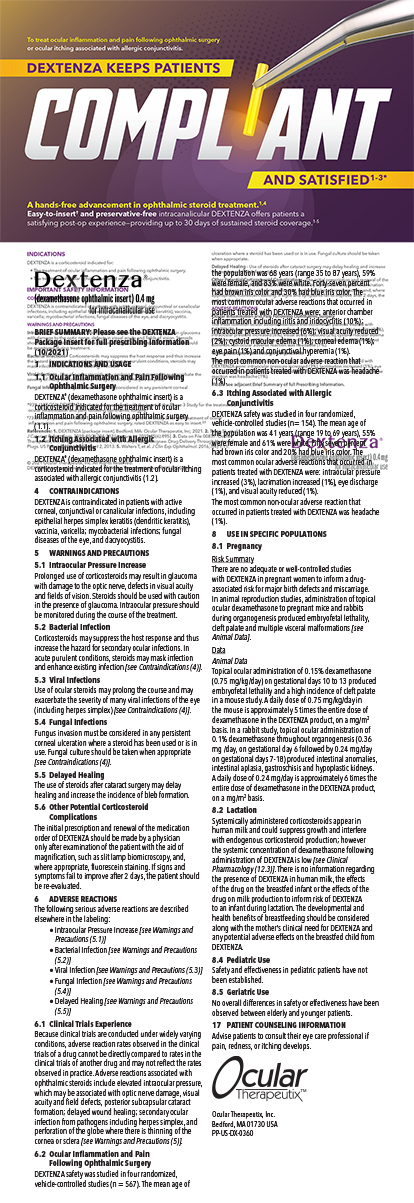
For patients who are not wearing eyeglasses full time, there is no benefit to having astigmatism and no optical downside to correcting it. I typically offer astigmatism-correcting options to patients if I think they will have 1.00 D or more of postoperative astigmatism and do not have vision-limiting comorbidities.
A study by Inoue et al reported that axis misalignment in toric IOL surgery is frequent.1 The Callisto eye digital marking system (Carl Zeiss Meditec) has greatly improved our surgical alignment of toric IOLs. There is often a difference in the toric axes predicted by different diagnostic devices or by different formulas. (The Barrett formula adjusts the oblique astigmatism axis due to the posterior corneal astigmatic vector.) In these situations, intraoperative aberrometry with the ORA System (Alcon) is an excellent tie-breaker to determine the best toric IOL axis. I then change Callisto to digitally mark the new target axis for the toric IOL after removing the OVD.
ORA is also invaluable for titrating manual limbal relaxing incisions (LRIs) on the OR table, directing the surgeon to either add another LRI or lengthen an initial one. After implanting a spherical multifocal or extended depth of focus IOL, I perform a pseudophakic ORA measurement. If there is 0.75 D of astigmatism or more, I’ll add an LRI. Using the ORA System to titrate how many manual LRIs to place and how long to make them offers a significant advantage over using the femtosecond laser to preplace corneal incisions based on a preoperative prediction.
A study I coauthored in 2018 reported that rotational stability was significantly better with the monofocal AcrySof IQ Toric IOL platform (Alcon) than with the Tecnis Toric IOL platform (Johnson & Johnson Vision).2 Our surgical repositioning rate was 1.2% in 2,383 consecutive AcrySof monofocal toric IOLs, compared with 3.5% in 731 consecutive Tecnis monofocal toric IOLs. However, we repositioned 6.9% of 779 consecutive Symfony toric IOLs (Johnson & Johnson Vision), despite nearly identical postoperative misalignment results between those and the Tecnis monofocal toric IOLs. This is because we were more aggressive about surgically realigning the presbyopia-correcting toric IOLs. Based on our studies, Johnson & Johnson Vision is making changes to its Tecnis toric IOL platform to reduce the postoperative rotation rate. These design changes should be forthcoming.
The RxSight Light Adjustable Lens (RxLAL) should give us the best refractive results for astigmatism. Rather than having to predict effective lens position, posterior corneal astigmatism, and surgically induced astigmatism, with the RxLAL we can wait until the postoperative refraction is stable and treat the residual refractive error by adjusting the lens. There is no chance of IOL rotation at that point. With staged adjustments, we can treat up to 4.50 D of cylinder.
Adjustability will be particularly helpful in eyes that have had refractive surgery and in corneas that do not have classic bow-tie topographies. Manifest refraction allows the patient’s brain to select the best fit astigmatism amount and axis postoperatively, and we can then adjust the IOL accordingly, instead of incorporating the cylinder into new spectacles.
Although I currently employ topography, multiple advanced power calculation formulas, intraoperative aberrometry, and digital intraoperative axis localization, I expect that newly graduated residents using none of these measures will achieve better astigmatism outcomes with the RxLAL than I currently do using all of these technologies as a highly experienced toric IOL surgeon.
Find out when I use toric IOLs in the Table. Click here!
1. Inoue Y, Takehara H, Oshika T. Axis misalignment of toric intraocular lens: placement error and postoperative rotation. Ophthalmology. 2017;124:1424-1425.
2. Lee BS, Chang DF. Comparison of the rotational stability of two toric intraocular lenses in 1273 consecutive eyes. Ophthalmology. 2018;125:1325-1331.




